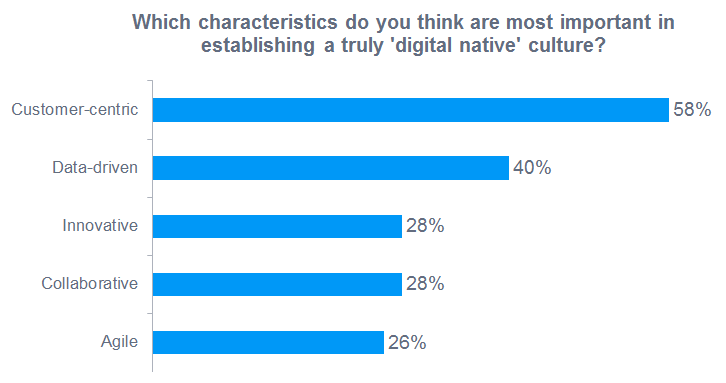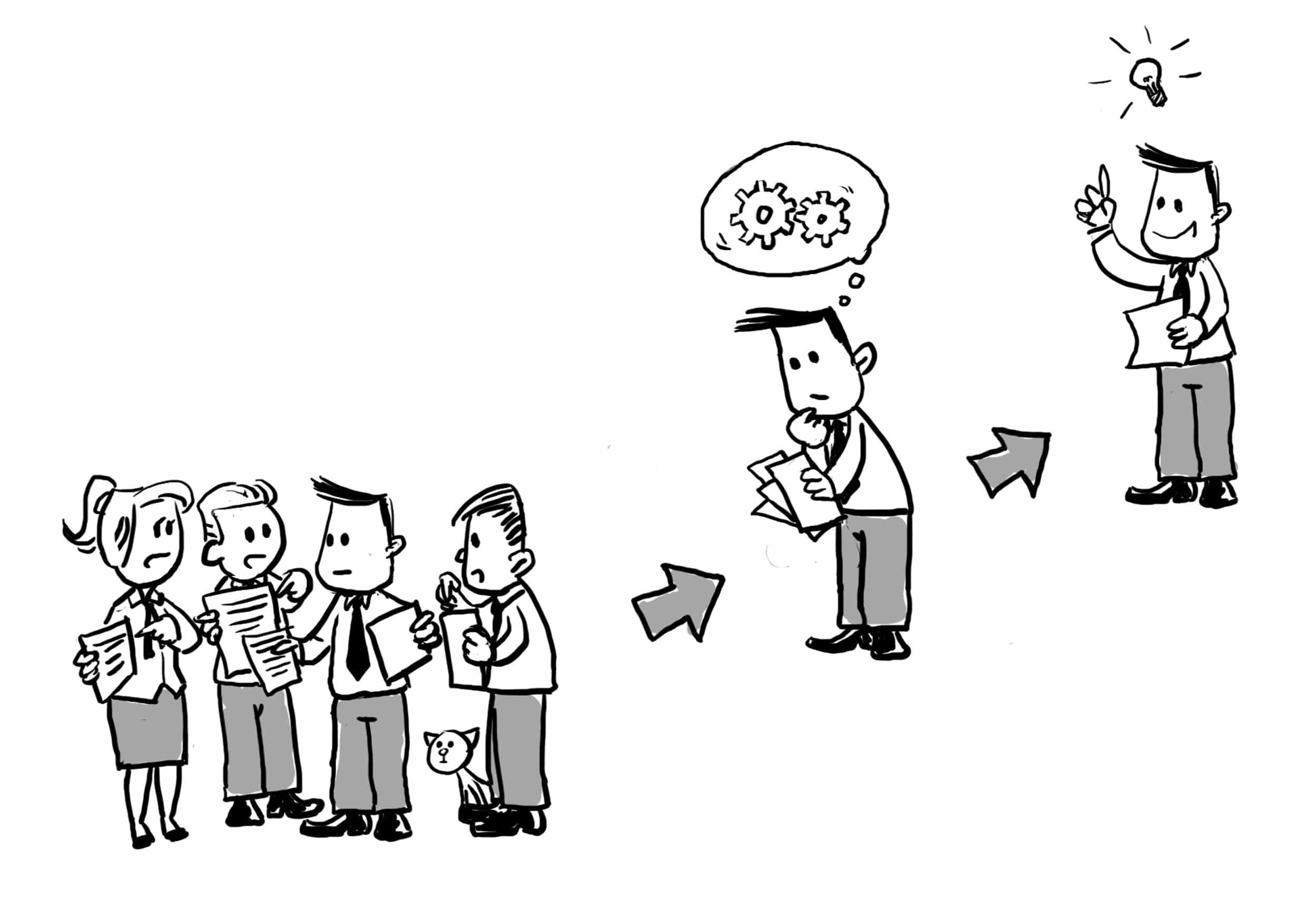Marketing often jumps from information to insight, to the frustration of market research. But the best marketers know that closer collaboration and sharing enables greater underst anding and deeper insights.… Click to continue reading
Category: Cornerstone content
Protected content
What Customer First Strategies Really Are (And What They’re Not!)
Everyone is talking about customer first strategies and why they are important. However walking the talk is a different matter!
An interesting article on NewMR by Ray Poynter prompted this post. He spoke about the differences between customer focus and customer centricity and the often times confusion between the two terms. That is why I tend to speak about customer first rather than customer centricity these days.
In its simplest form a customer first strategy is about thinking customer first in everything you do. Yes I know it sounds easy, but it really isn’t. And it doesn’t come naturally, at least to start with. I believe that’s because it involves a culture change to move the organisation in this direction. But I can assure you it’s worth it; its value is now well proven.
If you would like to see some exciting statistics about the value of making your customers the heart of your business, then CMO.com has a great article. It’s called “15 Mind-Blowing Stats About Customer Centricity” and many of the research results reported are still valid today, so it’s definitely worth a read.
What Are Not Customer First Strategies
I have seen a customer first strategy defined as
“a strategy by which businesses create their products, content, and marketing campaigns so that they serve their customers first, and their organization second.”
I don’t agree! If you don’t think about your organisation then it will likely fail! That said, I am also a little sensitive to the comments of Sir Richard Branson, who says
“Clients do not come first. Employees come first. If you take care of your employees, they will take care of the clients.”
This may be true for an airline, where the client is primarily basing their opinion on the service on board and the “niceness” of the crew. After all, every airline will get you from A to B.
However for many industries, customers are enjoying (or not!) your product or service without your employees being present. They will remain loyal (or not!) to your brand, based upon their own personal experiences, at least in most cases.
A customer first strategy is therefore not about only thinking about the customer. It is about understanding how best to serve them in such a way as to delight them, while keeping your employees and shareholders happy. This is relatively easy to do because when the business is going well, all stakeholders are happy.
What Customer First Strategies Are
Econsultancy asked what effective leadership in the digital age is. Several key leadership qualities were found, including being ruthlessly customer-centric, data-driven, innovative, collaborative and agile. I am thrilled to see customer centricity coming first by a long margin.

So the leaders have got the message, but what are they doing about it? Not a lot in many cases. And why? From my experience it is because they just don’t know where to start or what to do. (If that’s your situation, try our … Click to continue reading
How Marketers Can Benefit From More Than Technology: Modern Marketing
Just like most entrepreneurs and business people, I go to my fair share of conferences. I believe that marketers can benefit from being regularly challenged by new thinking and ideas.
One that stays in my memory for many reasons, was an event I attended in San Jose, California. Some say California is the centre of internet marketing; the San Francisco area for technology and San Diego for marketing. I tend to agree after having recently attended events in both cities.
The conference that changed many of my views on modern marketing was one about how business people, not just marketers, can break through our self-limiting behaviours. It is this idea which prompted today’s post. How we marketers can relinquish our well-established thoughts and actions to make our businesses grow more profitably. If this is of interest to you too, then read on.
HEART-CENTERED VERSUS CUSTOMER-CENTRIC
The conference I attended in San Jose was a great opportunity for me to meet many other people from around the world. People who want to make their businesses more heart-centered. You know that I am a champion of customer centricity. I love to support companies that want to put their customers at the heart of their businesses.
So you might be wondering what the difference is between a customer-centric and a heart-centered business. After the conference, I would say that in my opinion, not much. I believe it is difficult to think customer first without it also involving the heart; at least, it should.
As we try to put our customers at the centre of our organisations, it is through a concern to satisfy and delight them. A heart-centred business would probably go even further to ensure that what they do also benefits non-customers, or, at least, doesn’t harm them.
Creating shared value has become a strong commitment of many of the leading global players in the consumer goods market. Reliance Jio, Merck and Bank of America lead the way according to the Fortune “Change the World” List.
If the topic inspires you then you might also be interested in reading an article on “Innovation and Creating Shared Value”, which I was invited to contribute to one of the first issues of the Journal of Creating Value. I will also be speaking at the 2nd Global Conference on Creating Value in New York later this year. So let me know if you too will be attending and we can meet up.
CUSTOMER FIRST EXAMPLES
But back to defining the types of business. Which is yours? Heart-centered or “just” customer-centric? Or are you not even there yet?
Do you think customer first but forget about those who are not yet your customers? That’s a dangerous thing to do as you may be limiting your brand’s potential. Here are a few current habits that some companies have, which show how customer centric they are – or not:
- Asking credit card details for a “free” offer. This
Ten Reasons Why You Should NOT Conduct Market Research
If you commission or conduct market research, then this post is a must-read. It shares ten important reasons I have learnt over the years for NOT running a market research project, but which are unfortunately still prevalent today. Which, if any, are you guilty of? Leave your comments below – I dare you!
#1. WHEN THE ISSUE / OPPORTUNITY IS NOT CLEAR AND THE OBJECTIVES ARE NOT WELL DEFINED
Most organisations will have a briefing of some sort, written or oral, for each piece of research that is required. It usually includes the background to and the objectives of the project. These should be specified in terms of the opportunity or issue identified, as well as the relevant information and data already gathered and analysed.
If the briefing doesn’t include these basic elements, it might mean that someone wants to know or understand something and just thought research could quickly provide them with the answers. Wrong! The best studies come from a thorough situation analysis which should include a complete review of all current knowledge and past research findings.
#2. WHEN THE COST WOULD EXCEED THE VALUE OF DOING THE RESEARCH
Following on from the above point, when requesting a study, if the objectives are well defined, then the decisions and actions resulting from the findings should be clear. If they are, then the expected benefit of the information to be gathered will be evident.
Thinking about how you will use the data and information gathered is one of the best ways to estimate the true value of a piece of research. If the decisions and actions to be taken cannot be clearly expressed, then the research results will be just “nice to know” and not “need to know”. It also suggests that the objectives have not been well defined and I would suggest you revise them before continuing.
#3. WHEN THE BUDGET IS TOO SMALL TO DO AN ADEQUATE JOB
Most agencies would agree that clients often want a top-class work, but at a lower price than it would cost. Some clients even make a point of negotiating all prices downwards on principle. But this is a bad and futile habit. Their reputation soon goes before them. Agencies will then start adding an amount that they will remove in answering the client’s request for a cost reduction. If an agency is to become a true partner then transparency is one of the foundations, in both directions.
A second example of this aspect of cost is when a client wants to do research but doesn’t have an adequate budget to cover it. They may be tempted to request something “quick and dirty”. My recommendation to any agency who received such a request would always be to refuse to get involved. If it is worth doing it is worth doing well, and a good agency will always work with the client to accommodate their needs as best they can within the budget available.
You have heard, I am … Click to continue reading
How Well Do you Know Your Customers? 13 Questions your Boss Expects you to Answer
Be a true leader; share this post with the members of your team who need the inspiration and support.
Your boss expects you to be able to answer all his questions and especially to know your customers. Here are the 13 things your boss is likely to ask you and a handy Checklist to prove to him that you know your customers better than he realises.
Everyone speaks about customer centricity and the importance of the customer, but just how well do you know yours – really? The following is a checklist of 13 facts you need to be able to answer in order to know your customers as well as you should.
As you read the post, keep tabs on your answers and share your final score below. I’m offering a personal 50% discount code to spend in store for everyone who publishes their score here in July 2018. And if you’re the boss, I’d love to hear how well you think your team would do – 100% of course, no?!
#1. Who is your customer?
 OK I’m starting off slowly, but do you know who your customers are? Not who uses your category, but who the people are that actually buy your product or service today? How much do you really know about them?
OK I’m starting off slowly, but do you know who your customers are? Not who uses your category, but who the people are that actually buy your product or service today? How much do you really know about them?
Their age, gender and location are the basics, but there’s a lot more you need to know about them. Check out “12 things you need to know about your target customers” for more on what you need to know to be able to describe them in the depth your boss expects.
The C3Centricity 4W™ Template is a great resource for storing all the information you have on your customer. Download a free copy and watch the related videos HERE.
#2. What business are you in?
Although this refers more to the category than the customer, it is important to ensure you are looking at it through the eyes of your customers. Many organisations are working with industry definitions rather than customer ones. What about you? If you want to know your customers, you need to understand what category they think they are buying.
This is one of the essential elements you need to understand in order to know your customers deeply. It is something that many organisations don’t take the time to clearly identify, which results in an incorrect appreciation of their market and competitors. By not correctly identifying the category you are in, or plan to enter, your innovations will also lack the success you are hoping for.
For instance, are you in the food business or the pleasure business, beverages or relaxation? One of my clients wanted to launch a fruit flavoured soft drink and thought they were competing with other soft drinks. When we worked together we discovered that they were actually competing in the energy drink business! Reklama internete ir SEO optimizacija https://seopaslaugos.com/117-seo-optimizavimas
How many of your brands are not competing where you … Click to continue reading
Customer Centricity is Today’s Business Disruptor (Insights are its Foundation)
I recently returned from a speaking invitation in Las Vegas. It was an incredible Symposium run by Sitecore, and I was blown away by the importance placed on customer-centricity during the whole event!
From the opening keynote by Sitecore’s CEO Mark Frost to the second-day keynote by Kirsten Newbold-Knipp from Gartner, everyone in this tech and data-heavy conference understood that data is only as good as the use you put on it. Do you?
We are all excited by the wealth of information available to us about our customers, from the IoT as well as people’s behaviour on the internet. In fact, data gathering is no longer an issue; it is its management, analysis and, above all, understanding to turn it into actionable insights that is today’s challenge.
I believe that the reason most organisations today are drowning in data and thirsting for insights, as I am often quoted as saying, is because they are more excited by data than people.
“Organisations are drowning in data and thirsting for insights”
And yet data usually comes from people and their acts and is analysed by people, so that businesses can have more impact on their customers’ attitudes and behaviours. It is, therefore, vital to turn that wealth of information into actionable insights. That’s why I want to share my 7-step process for doing just that with you.
I call it Catsight™, and the acronym always causes a few giggles, as I’m sure you can imagine. After all, business is a serious topic, which is why I try to find ways for us all to find reasons to laugh in all this seriousness.
I chose the name Catsight™ because I thought it is memorable and has a serious relevance to what insight developers do.
Cats have an acute vision, particularly in the dark. They are good at listening because their ears turn 180 degrees. They are highly sensitive – just ask an owner how their cat reacts when they are sad or ill.
Seeing in the dark, listening skills, sensitivity and empathy for the customer are essential skills for all insight developers.
So here are my seven steps to actionable insight development. Note that information gathering is only step #6!
If you react to business questions immediately by running a market research project, please read on. It could save you a lot of money and time!
Using my method, you only start spending money on running a survey in step six – and only if you have identified a gap in your knowledge of the situation. Many organisations don’t know what they already know and what is already available within the company that they are unaware of.
This 7-step process will save you money because you will run less research AND make better use of all the information already available within the organisation. That’s an immediate improvement in the ROI of your information gathering.
C = Category
Whenever you want to develop insight, the first task is to decide on the category … Click to continue reading
Does your Organisation Really Need a Market Research Department? And in the Future?
There’s been a lot of talk recently about New Marketing; how communication is now all about engagement, how the consumer is boss and such like.
But there has been very little said about a New Market Research Department! If you’re concerned by this situation, whether you work in marketing, market research or a completely different area, then read on for some thoughts on how this situation can and must change.
Earlier this year I wrote about the future of market research / insight departments and what researchers need to do within their organisation to improve their image and perceived value. This week I want to take a wider look at the profession in general.
Current Perception of Market Research
According to Wikipedia, Marketing is “The process of communicating the value of a product or service to customers, for the purpose of selling the product or service. It is a critical business function for attracting customers” The definition of Market Research is “Any organized effort to gather information about markets or customers. It is a very important component of business strategy”.
What is interesting in comparing these two definitions is the difference in appreciation of the value to business of the two. Marketing is said to be a “critical function”, whereas Market Research is said to be “very important”. Perhaps this is why Market Research Departments continue to be hammered, their budgets are constantly under pressure and their value to the business is questioned.
Well, things are about to change, or at least there is an opportunity for this, if researchers take up the incredible chance offered to them in today’s world of information (over?) abundance. You can’t continue to do the same old same old when marketing, and more importantly the consumer, is clearly on the move.
What Business gets from Market Research
I think that one of the biggest problems that Market Research has (continues to have) is that Marketing and Management in general, find it too complex. What is often delivered from market research, BY researchers, tends to be numbers and findings, not underst anding, insight and recommendations.
We no longer need market research to share the numbers and information today. More and more often, these are coming automatically into companies from an ever-growing number of sources, and a lot of it is even in real-time, something market research results never were! Think sensors on products, GPS on smart phones, retail purchases with debit / credit / loyalty cards, social media interactions …. DataShaka recently wrote in their The Lab an interesting perspective on data management and information sources which you might want to check out.
That’s a lot of data; indeed Aaron Zornes, chief research officer of The MDM Institute, was recently quoted in Information Management as saying that “a typical large company with (has) 14,000 or so databases on average”. And most of that data will be just sitting around in IT storage systems, rarely reviewed and even … Click to continue reading

















